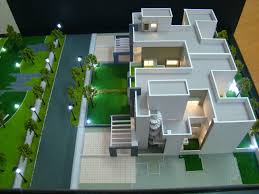architectural model making is an integral part of the design process, and the types of models created vary depending on the stage of the design process.
Conceptual models are often created at the initial stages of the project alongside the initial sketches and brainstorming sessions. These models allow designers to explore their ideas in a three-dimensional way and are typically constructed from simple materials that can be easily adjusted as the design progresses.
As the project moves forward, a working model is usually constructed. These models are made of higher quality materials and reflect the specifications of the design. Working models help designers communicate the scale, form, and materials to their clients and colleagues in a more detailed way.
Finally, a presentation model is created. These models are far more detailed than previous models and reflect the proposed materials of the project. They often include contextual information about the site and surroundings, as well as additional features such as illumination and color schemes. These models are created to impress clients and to help them understand the proposed design in the most realistic way possible.
In conclusion, architectural model making is a vital part of the design process, and the type of model made depends on the stage of the design process. Conceptual, working, and presentation models all play a crucial role in helping designers communicate their ideas and bring their projects to life.

